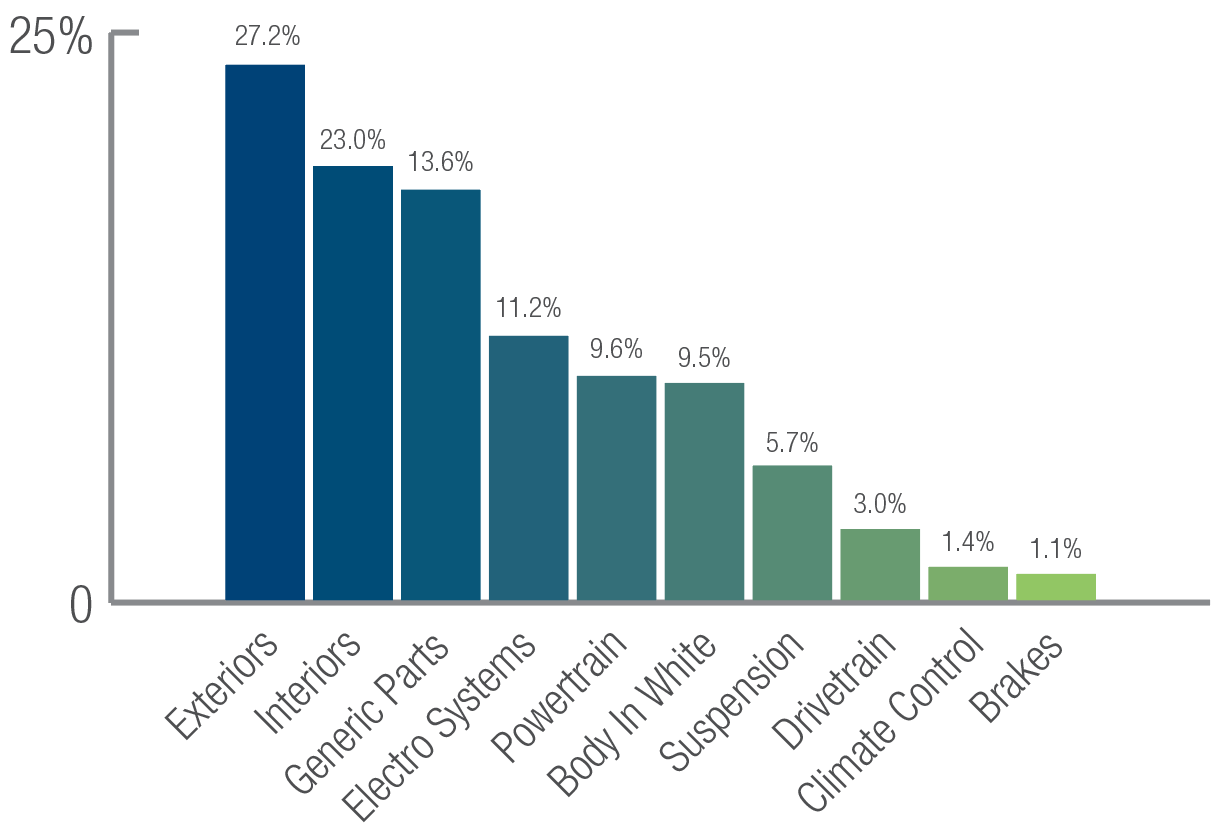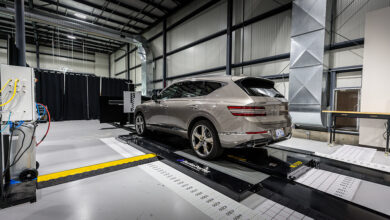Report: Exterior & Interior Components Make Up 50% of Manufacturers’ Quality Control Costs
A study by TRIGO revealed quality failures in exterior & interior components & generic assembly parts can greatly impact vehicle launches…

In a recent study conducted across 17 assembly plants in seven countries, TRIGO, a global company focused on quality control and management for the transportation industry, examined the costs of various failures affecting automakers at the time of vehicle launches. The findings showed that the majority of quality failures concern exterior components (27.2%) and interior components (23%), followed by generic assembly parts such as fasteners, adhesives and screws (13.6%).

Quality Claims Put to the Test During the Production Stage
Analyzing data from 229 suppliers, TRIGO’s study revealed that certain “legacy” components, particularly interior trim parts such as ceilings, panels and floor coverings, account for 23% of the quality defects observed, making them one of the most problematic categories.
Other sub-assemblies—such as seats, center consoles, safety systems (airbags, seatbelts), interior accessories (rear-view mirrors, lighting and keys), sound insulation and pedal systems—also frequently show defects directly impacting the user experience.
Onboard Electronics: An Exponential Increase in Costs & Complexity
Onboard electronics are of growing concern, noted the report. ECUs (electronic control units), central to the control of modern vehicles, have risen sharply in cost. Despite being involved in only 8.2% of incidents examined by the study, they accounted for up to 11.2% of quality assurance costs.
Vehicles can contain up to 50 ECUs responsible for controlling critical functions from engine performance, power steering and safety systems to comfort and convenience features. The increased provision of software updates delivered by reflashing requires specialized equipment and advanced technical skills, often leading to production interruptions.
“We are witnessing a shift in quality issues towards high value-added parts, particularly electronic systems,” explained Ricard Lou, director of Data Solutions at TRIGO. “The use of artificial intelligence represents a promising solution for adapting industrial processes to these new quality requirements and optimizing industrial performance.”
Two Key Areas of Concern: Electrical ECUs & Interior Cabin Parts
Two major areas of noncompliance have been highlighted in the report. On the one hand, ECUs require equipment that is often incompatible with industrial production rates, resulting in significant additional costs. Four systems account for the majority of reprogramming incidents: the engine module, transmission control unit, body module and infotainment unit. Updates are further complicated by vendor lock-in.
Defects in the passenger compartment, such as a poor fit or subpar visual finish or tactile feel, can directly impact the brand’s image. While they do not affect vehicle functionality, it may keep customers from buying it. In an ultra-competitive market, where the onboard experience is increasingly a major differentiator, such discrepancies now prove as strategic as technical performance, stated the report.
AI─A Strategic Tool for Next-Generation Quality
TRIGO states that to identify, correct and gradually eliminate quality issues in the automotive industry, technology must be used pragmatically at several levels. First, traditional quality checks must be maintained for all types of components. Such checks may, however, be enhanced through technical means.
Second, the growing failure rate of electronic systems must be addressed through increasingly sophisticated diagnostic and reflashing capabilities. Finally, artificial intelligence is quickly becoming a strategic lever for optimizing quality control on an increasingly wide range of components, including electronics.
“In order to secure the quality of components, we recommend strengthening quality controls upstream in the value chain,” concluded Augustin Brochot, executive vice-president of TRIGO WEMEA. “AI is a strategic lever for improving the detection and resolution of appearance defects on all kinds of components, through automated optical inspection. It also allows us to anticipate non-conformity through prediction models.”



